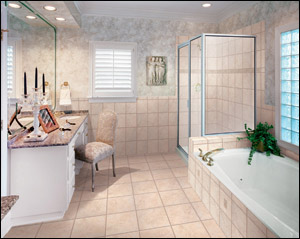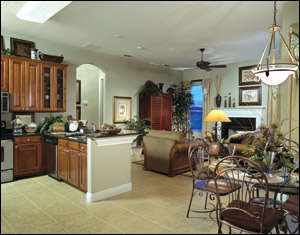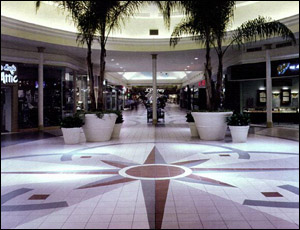Tile | How It's Made
There are 5 steps in the ceramic tile manufacturing process:
Mining
- process begins with the mining of the raw materials
- mixture composed of clay and minerals
Blending and Mixing
- introduces mud into the mix
- clay and mineral mixture blended and mixed into a semi-fine powder
- water is added to form a wet slurry or mud-like consistency
- the slurry is pumped into a large dryer
- result- fine clay powder that feels like warm, fine sand
Pressing
- applies pressure to the process
- clay is pressed or formed into a tile shape
- pressed tiles are called green tiles
- another method called extrusion replaces the pressing step
- extruded tiles are formed by forcing the clay through a mold versus pressing the tile
- pressing is the more common method used today
- after the green tiles are formed they are dried
Glazing
If the tile is to remain unglazed it skips this step and goes directly to the firing kiln.
- liquid is prepared from a glass derivative called frit and colored dyes
- applied by a high-pressure spray or poured onto the tile
Firing
- fired in the kiln at temperatures around 2,000 degrees Fahrenheit
- monocoturra tile or single fired -tiles that are fired once after the glaze is applied
- biocuttura or double fired- first fired after the green tile is dried and fired again after the glaze is applied
Alternative- porcelain
- made up of 50% feldspar
- fired at a much higher temperature
- harder and denser
- high performance
- low water absorption ratings of less than 0.5 percent
- can be used for interior and exterior applications or commercial areas
After the finished tiles have been inspected for quality assurances, they are packaged, crated and ready to be shipped.
Uses
- not all ceramic tile is suitable for each area of your home
- tile on your kitchen backsplash may not be recommended for installation on the floor
Rating System
- rating system provided
- rating system found on samples or boxes
- most common system rates ceramic tile abrasion resistance or the overall durability of the tile
5 Classes
Slip Resistance Rating
- measured by its Coefficient of Friction (COF)
- higher the COF the more slip resistant the tile
- important for areas that get wet
Other ratings
- scratch resistance
- moisture absorption
- chemical resistance
- breaking strength











